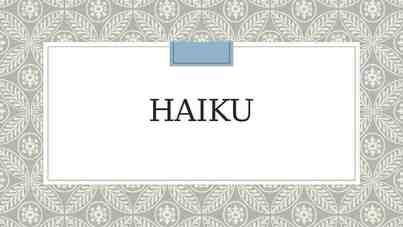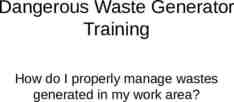Writers give their work clarity by using proper conversations of
17 Slides235.77 KB
Writers give their work clarity by using proper conversations of writing. Readers can understand who is speaking properly formatted dialogue.
Why are quotation marks important? In writing, the only exactly is , and when, is by the quotation marks. “No, but I’ll be done soon, ” said Paul. “Did you finish your essay yet? ”Lynn asked.
Direct and Indirect Quotations A direct quote is what someone has said, as they said it. Use direct quotation marks to enclose direct quotations. Indirect quotations is when you are what someone said. Often used by saying the word “that” between who said it and what they said. Do not use quotation marks for an indirect quotation—a rewording of a direct quotation. Mimi said, “Reptiles are my Juan said, The bus was favorite animals.” Quotation late today. “Are turtles considered reptiles?,” asked Brian. Juan said that the bus Quotation was late today.
Rules of Formatting Dialogue 1. Quotation marks go at the and of words. 2. A speaker’s sentence should always with a . 3. Some form of punctuation ( , question , mark, or ) should go at the of words, but the quotation . 4. Each time a new speaker speaks, a new indentation (Tab) is needed.
Strategies ( ) Write a words and then it at the . To do this, write the spoken words in quotation marks. A direct quotation can be set off from the rest of a sentence by a comma, a question mark, or an exclamation point, but not by a period. “Dogs make better pets than cats do,” said Frank. “Have you ever had a cat?” Amy asked. “No, and I never will!” he replied.
Strategies ( ) the words by placing the words in the . When an interrupting expression divides a direct quotation into two parts, place quotation marks around both parts of the quoted statement. Will you take care of my pets, Mr. Yates asked, while I’m on vacation? One quoted sentence with an interrupting expression Yes, I will, said Ted. You can count on me. New quoted sentence following the interrupting expression
Strategies ( ) Write the narrator’s words first and the spoken words at the end. To do this, write the , then a , the words (beginning with a capital letter) in quotation marks. No matter how often Denise pleaded with Renee, she was always stubborn, Renee said, “I’m going to make my own mistakes and you have to let me or I’ll never learn.”
Strategies (D) Write the spoken words with no comment from the narrator. In this case it is obvious who the speakers are because the previous speaker was tagged. This will only work when this happens, or the reader will have no idea who is speaking. To do this, indent to show the new speaker. Yes, ma’am, I think it will be. It might take some time, even then, but I believe that will do it. And will you help? The old man smiled and nodded. Oh, we’ll help all right.
Practice Rewrite the following sentences, punctuating them as needed. 1. When is this narrative due she asked 2. I have so much homework this week she complained that I’m going to have to cancel my date 3. The waitress said they bake all their own pies 4. Nervously scribbling on her notebook she bust out I can’t make it Friday night Joe 5. The waitress said that they bake all their own pies 6. I have two tests this week she went on plus an essay due Monday 7. Next week life should get a lot easier she said 8. I just hope she exclaimed that all this hard work will pay off 9. Eliza told that’s she should stop worrying so much have a little fun 10.Straight A’s she laughed now, that’s fun
Why are quotation marks important? In writing, the only way to tell exactly who is speaking, and when, is by the quotation marks. “No, but I’ll be done soon, ” said Paul. “Did you finish your essay yet? ”Lynn asked.
Direct and Indirect Quotations Direct Quotations A direct quote is quoting exactly what someone has said, as they said it. Use direct quotation marks to enclose direct quotations. Mimi said, “Reptiles are my favorite animals.” “Are turtles considered reptiles?,” asked Brian. Indirect Quotations Indirect quotations is when you are paraphrasing what someone said. Often used by saying the word “that” between who said it and what they said. Do not use quotation marks for an indirect quotation—a rewording of a direct quotation. Direct Juan said, “The bus was Quotation late today.” Indirect Quotation Juan said that the bus was late today.
Rules of Formatting Dialogue 1. Quotation marks go at the beginning and ending of spoken words. 2. A speaker’s sentence should always start with a capital letter. 3. Some form of punctuation (comma, question mark, exclamation mark, or period) should go at the end of spoken words, but before the closing quotation mark. 4. Each time a new speaker speaks, a new indentation (Tab) is needed.
Strategies (A) Write a spoken words first and then narration it at the end. To do this, write the spoken words in quotation marks. A direct quotation can be set off from the rest of a sentence by a comma, a question mark, or an exclamation point, but not by a period. Comma “Dogs make better pets than cats do,” said Frank. Question mark “Have you ever had a cat?” Amy asked. Exclamation point “No, and I never will!” he replied.
Strategies (B) Interrupt the spoken words by placing narrator words it in the middle. When an interrupting expression divides a direct quotation into two parts, place quotation marks around both parts of the quoted statement. “Will you take care of my pets,” Mr. Yates asked, “while I’m on vacation?” One quoted sentence with an interrupting expression “Yes, I will,” said Ted. “You can count on me.” New quoted sentence following the interrupting expression
Strategies (C) Write the narrator’s words first and the spoken words at the end. To do this, write the narrator’s words, then a comma, then the spoken words (beginning with a capital letter) in quotation marks. No matter how often Denise pleaded with Renee, she was always stubborn. “I’m going to make my own mistakes and you have to let me or I’ll never learn,” said Renee.
Strategies (D) Write the spoken words with no comment from the narrator. In this case it is obvious who the speakers are because the previous speaker was tagged. This will only work when this happens, or the reader will have no idea who is speaking. To do this, indent to show the new speaker. “Yes, ma’am, I think it will be. It might take some time, even then, but I believe that will do it.” “And will you help?” The old man smiled and nodded. “Oh, we’ll help all right.”
Practice Rewrite the following sentences, punctuating them as needed. 1. When is this narrative due she asked 2. I have so much homework this week she complained that I’m going to have to cancel my date 3. The waitress said they bake all their own pies 4. Nervously scribbling on her notebook she bust out I can’t make it Friday night Joe 5. The waitress said that they bake all their own pies 6. I have two tests this week she went on plus an essay due Monday 7. Next week life should get a lot easier she said 8. I just hope she exclaimed that all this hard work will pay off 9. Eliza told that’s she should stop worrying so much have a little fun 10.Straight A’s she laughed now, that’s fun






















